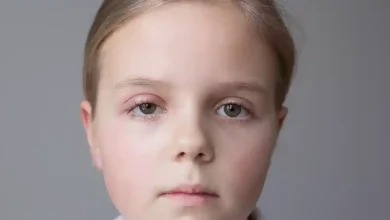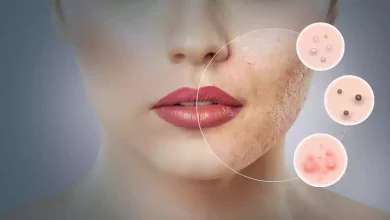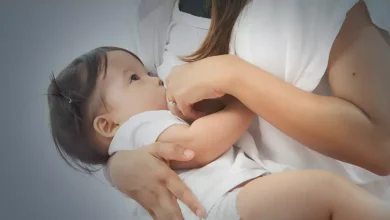All about Clubfoot
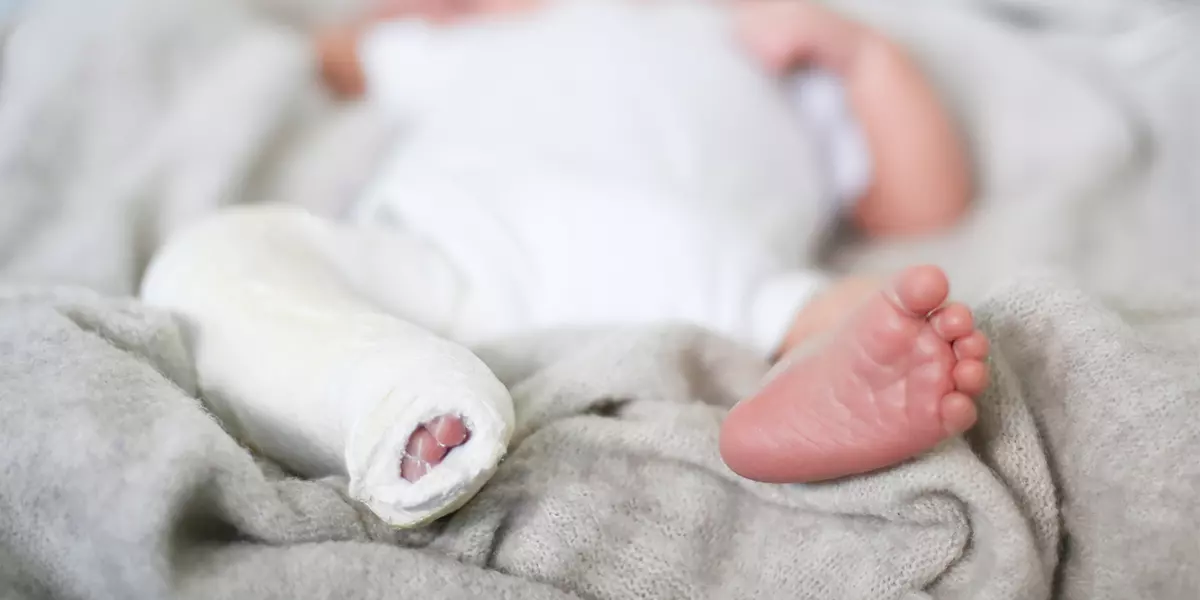
What is Clubfoot?
Clubfoot includes a variety of foot abnormalities that are generally present at birth (congenital) where your baby’s foot is twisted out of position or shape. In clubfoot, the tissues that connect the muscles to the bone (tendons) are shorter than normal. Clubfoot is quite a common birth defect and is generally an isolated problem for an otherwise healthy newborn child. Clubfoot could vary from mild to severe and around half of children with clubfoot have it in both feet. If your child has clubfoot, it will be difficult for him to walk normally, so doctors usually recommend treating it soon after birth but clubfoot does not cause any kind of pain.
What are the Types of Clubfoot?
The types of clubfoot include:
Isolated or idiopathic clubfoot: It is the most common type and if your child has clubfoot with no other medical issues it is called isolated clubfoot. Idiopathic means that the cause of clubfoot isn’t clear.
Nonisolated clubfoot: Nonisolated clubfoot means along with clubfoot there are other health conditions such as arthrogryposis (a joint problem) and spina bifida (a neural tube disorder). Neural tube defects mean problems in your baby’s brain, spine, and spinal cord.
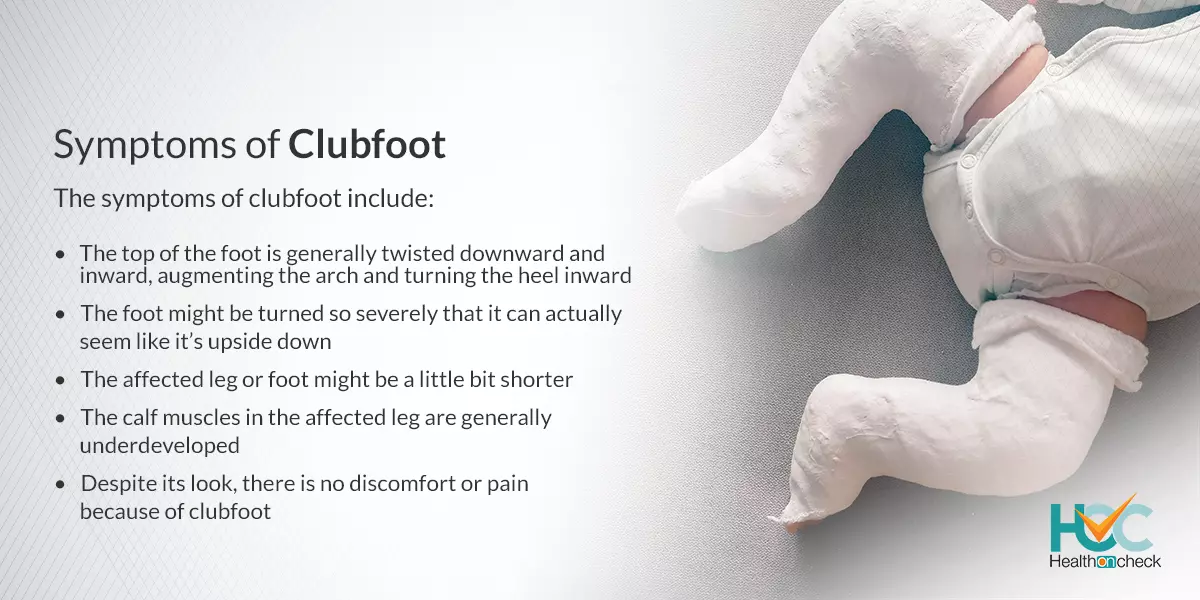
What are the Symptoms of Clubfoot?
The symptoms of clubfoot include:
- The top of the foot is generally twisted downward and inward, augmenting the arch and turning the heel inward.
- The foot might be turned so severely that it can actually seem like it’s upside down.
- The affected leg or foot might be a little bit shorter.
- The calf muscles in the affected leg are generally underdeveloped.
- Despite its look, there is no discomfort or pain because of clubfoot.
What are the Causes of Clubfoot?
The exact cause of clubfoot is not known but it seems that it might occur due to a combination of genetics and environment:
Genetics: Genes are the reason for how the child looks, grows, and functions. Any issue with a gene or more can cause clubfoot.
Environment: Women who are into drug abuse and smoking during pregnancy might increase the risk of having a baby with a birth defect including clubfoot.
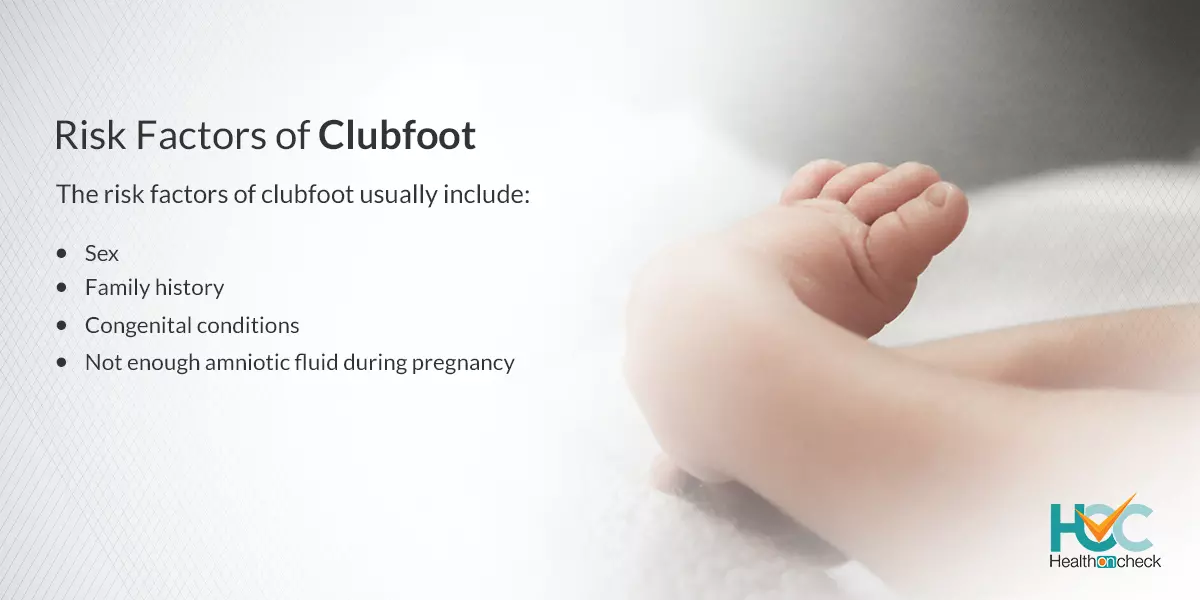
What are the Risk Factors of Clubfoot?
The risk factors of clubfoot usually include:
Sex: Boys are about twice as likely to have clubfoot as compared to girls.
Family history: Having a family history of clubfoot increases the risk of a baby born with clubfoot.
Congenital conditions: In some instances, clubfoot can be linked with other abnormalities of the skeleton congenital (present at birth), like spina bifida, a birth defect that happens when the spine and spinal cord is not developed or closed properly.
Not enough amniotic fluid during pregnancy: Not having enough fluid surrounding the baby in the womb might increase the risk of clubfoot.
What are the Complications of Clubfoot?
Clubfoot usually doesn’t cause any complications until your child begins to stand and walk. If the clubfoot is treated, your child can walk freely and comfortably but there might be some difficulties with:
Movement: The affected foot might be a little bit less flexible.
Leg length: The affected leg might be slightly shorter, but it usually does not cause any problems with mobility.
Shoe size: The shoe size of the affected foot might be smaller than the unaffected foot.
Calf size: The muscles of the calf on the affected side might be smaller than those on the unaffected side.
If not treated, clubfoot might result in some serious problems including:
Arthritis: The risk of your child developing arthritis increases.
Poor self-image: The unusual appearance of the foot might cause your child to suffer from low self-esteem.
Not able to walk normally: The twist of the ankle might not permit the child to walk on the sole and to compensate, your child might walk on the ball of the foot, the outside of the foot, or even the top of the foot.
Problems stemming from walking adjustments: Walking adjustments might adversely affect the normal growth of the calf muscles and can result in large sores or calluses on the foot, causing an awkward gait.
How is Clubfoot Diagnosed?
Mostly, doctors notice clubfoot when you’re having an ultrasound when you are pregnant. A prenatal ultrasound shows images of the developing fetus. If clubfoot is diagnosed during pregnancy, you can begin planning the treatment your child will require after birth.
In some cases, clubfoot might be diagnosed after your baby is born. Your doctor might notice it during one of your baby’s first physical exams. In some instances, your doctor might prescribe an X-ray to confirm the diagnosis.
What are the Treatment Options Available for Clubfoot?
Treatment options include:
Stretching and casting (Ponseti method)
It is the most common treatment for clubfoot where your doctor will:
- Move your baby’s foot into the correct position. After that, he/she will place it in a cast to hold it there
- Reposition and recast your baby’s foot one time every week continuously for many months.
- Carry out a minor surgery to increase the size of the Achilles tendon (percutaneous Achilles tenotomy) toward the end of this procedure.
After realigning the shape of your baby’s foot, you are required to maintain it with one or more of the following:
- Perform stretching exercises with your baby
- Using special shoes and braces for your baby
- Assure that your child wears the shoes and braces as long as required which is generally full-time for three months, and then at night and during naps for nearly three years
To make this procedure successful, you have to apply the braces as per your doctor’s directions to make sure that the foot doesn’t return to its original position. Many times this process does not succeed because the braces are not used as directed.
Surgery
If the situation of your baby’s clubfoot is serious and is not responding well to nonsurgical treatments, more invasive surgery might be required. An orthopedic surgeon will perform surgery to lengthen or reposition tendons and ligaments to place the foot into a better position. After surgery, your child will be in a cast for up to three months, and after that, he has to wear a brace for one year or more to stop the clubfoot from returning.
Living with Clubfoot
It might be stressful for you to see your baby with the casts, splints, or braces they’d have to wear. But you have to be aware that clubfoot is a common birth defect with quite a few successful treatment results. It’s quite vital to follow the treatment schedule prescribed by your doctor carefully which increases the chances of success. With the right treatment, your child can walk, run, and even play sports without feeling any discomfort or pain. In some cases, even with treatment, clubfoot might not be completely correctable but usually, children who are treated early grow up to wear ordinary shoes and live full, active lives.
Whom to Consult?
Your doctor is likely to notice clubfoot soon after your child is born, depending on appearance. If your child is diagnosed with clubfoot, then discuss it with your child’s doctor and make an appropriate treatment plan.

